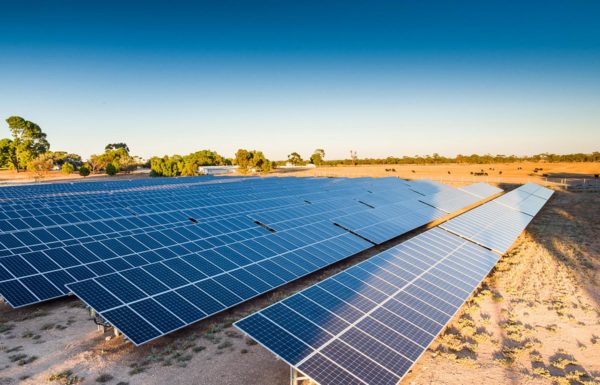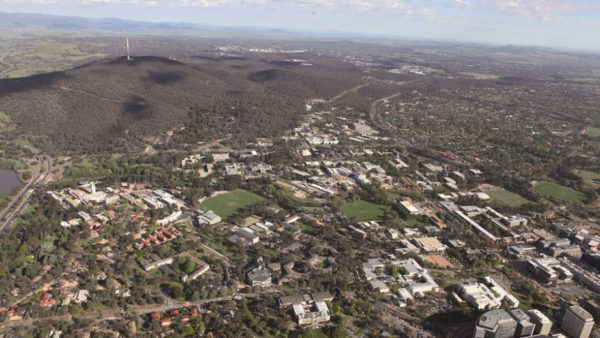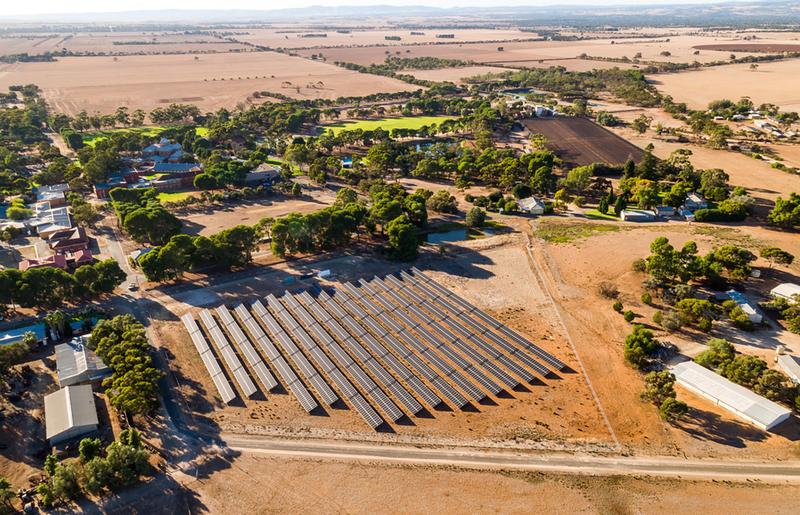The University of Adelaide has officially powered up its 1.2 MW Roseworthy Solar and Energy Storage Project which is forecast to generate an average of 42% of the campus’ energy needs but it has already surpassed expectations, delivering up to 90% of the Roseworthy campus’ daily energy requirement.
“We were excited when, on its first full day of operation, the solar farm offset nearly 90% of the Roseworthy campus’ electrical load,” project manager Rob Newcombe said.
“In the simplest of terms, this meant powering up the animal hospitals, teaching labs, our lecture theatres and offices, research facilities, all our computers and devices, the dining hall, swimming pool, the lights on the oval, the gym and student housing, all off the back of renewable energy.
“Although this outstanding first-day result occurred during mid-semester break, when the campus was quieter than usual, it was still an extraordinary achievement on day one.”
The Roseworthy Solar and Energy Storage Project comprises 3,200 solar modules coupled with a 400 kW/1600 kWh hybrid battery storage solution featuring a combination of Tesla lithium-ion batteries (300 kW/1,200 kWh) and UniEnergy Technologies (UET) Vanadium flow batteries (100 kW/400 kWh).
Sydney-based TEC-C Investments was responsible for the engineering, procurement and construction of the project and said the large amount of new generation capacity had necessitated an upgrade of the campus’ existing low voltage network to an internal high voltage 11 kV network.
TEC-C chief development officer Felipe Kovacic said they had also established a state-of-the-art sophisticated microgrid capable of managing the various electrical generation sources. The microgrid and HV network allows the campus to operate, if required, for periods of time independently from the grid running entirely off renewable energy.
The system has been fully operational since late April but was only officially unveiled on Thursday with South Australian Energy Minister Dan van Holst Pellekaan among those on hand.
“This solar and energy storage project is one of many supported by the $150m Renewable Technology Fund which is supporting next generation, renewable energy storage projects across the state,” van Holst Pellekaan said.
“The project is another step on the path to reach 100% net renewable energy by 2030, which will help us meet both our energy needs and Australia’s Paris climate emission agreements.”

Image: Tom Roschi Photography
While the solar farm will serve to reduce energy costs and increase the resilience of energy supply to the Roseworthy campus, it will also provide research and learning opportunities for researchers and students.
“The innovative component of what we have here at Roseworthy is the ability to combine a renewable source with conventional grid supply of electricity and that will be very fertile ground for future experimentation and trial work,” Roseworthy campus dean Professor Wayne Hein said.
“The project will be a living laboratory, providing our researchers with opportunities for projects in areas including energy management, grid segregation, low-cost fault detection systems, system resilience, and cybersecurity.
“There will also be opportunities for students to learn, with plenty of scope to incorporate different aspects of the facility into university courses and projects for students studying everything from engineering, cybersecurity and space, through to environmental science.”
University of Adelaide chief operating officer Bruce Lines said the Roseworthy solar farm is the largest solar project in the university’s history and a key element of the Campus Sustainability Plan.
“Managing and responding to climate change is one of the most important challenges of our time. As the leading research and education institution in the state and one of its biggest employers, the community would justifiably expect the University of Adelaide to lead by example,” he said.
“The research and learning opportunities associated with the project will also filter out to benefit industry and the wider community, including testing the performance and reliability of battery storage technology in hot, dry conditions.”

Image: ANU
The unveiling of the University of Adelaide’s new solar farm coincides with the Australian National University (ANU) announcing it has become the first university in the country to commit to reducing carbon emissions to below zero by 2030.
ANU Vice-Chancellor Brian Schmidt said ANU is “walking the walk” to tackle climate change by not only reducing emissions but offsetting any emissions the university cannot avoid.
“Climate change is already here. The past decade includes nine of the 10 hottest years on record around the world – 2019 was Australia’s hottest year ever,” he said.
Under the Paris Agreement, governments around the world have committed to limit global warming to well-below 2 degrees Celsius above pre-industrial levels and, if possible, to 1.5 degrees Celsius.
“Unfortunately, the world is on track to warm by between 2.8 and 3.2 degrees Celsius by the end of this century,” Schmidt said.
“Reducing our greenhouse gas emissions to zero as soon as possible is essential, but this alone won’t be enough to meet our global goals.”
The commitment is part of what the ANU is calling its Below Zero Initiative. The ANU has also set an interim target of net-zero emissions by 2025, as a stepping stone to achieving negative emissions.
“Achieving below zero is ambitious and it will involve big changes to the way we do things – but as the national university, we must show leadership in driving a societal transformation to address climate change,” Schmidt said.
This content is protected by copyright and may not be reused. If you want to cooperate with us and would like to reuse some of our content, please contact: editors@pv-magazine.com.









By submitting this form you agree to pv magazine using your data for the purposes of publishing your comment.
Your personal data will only be disclosed or otherwise transmitted to third parties for the purposes of spam filtering or if this is necessary for technical maintenance of the website. Any other transfer to third parties will not take place unless this is justified on the basis of applicable data protection regulations or if pv magazine is legally obliged to do so.
You may revoke this consent at any time with effect for the future, in which case your personal data will be deleted immediately. Otherwise, your data will be deleted if pv magazine has processed your request or the purpose of data storage is fulfilled.
Further information on data privacy can be found in our Data Protection Policy.